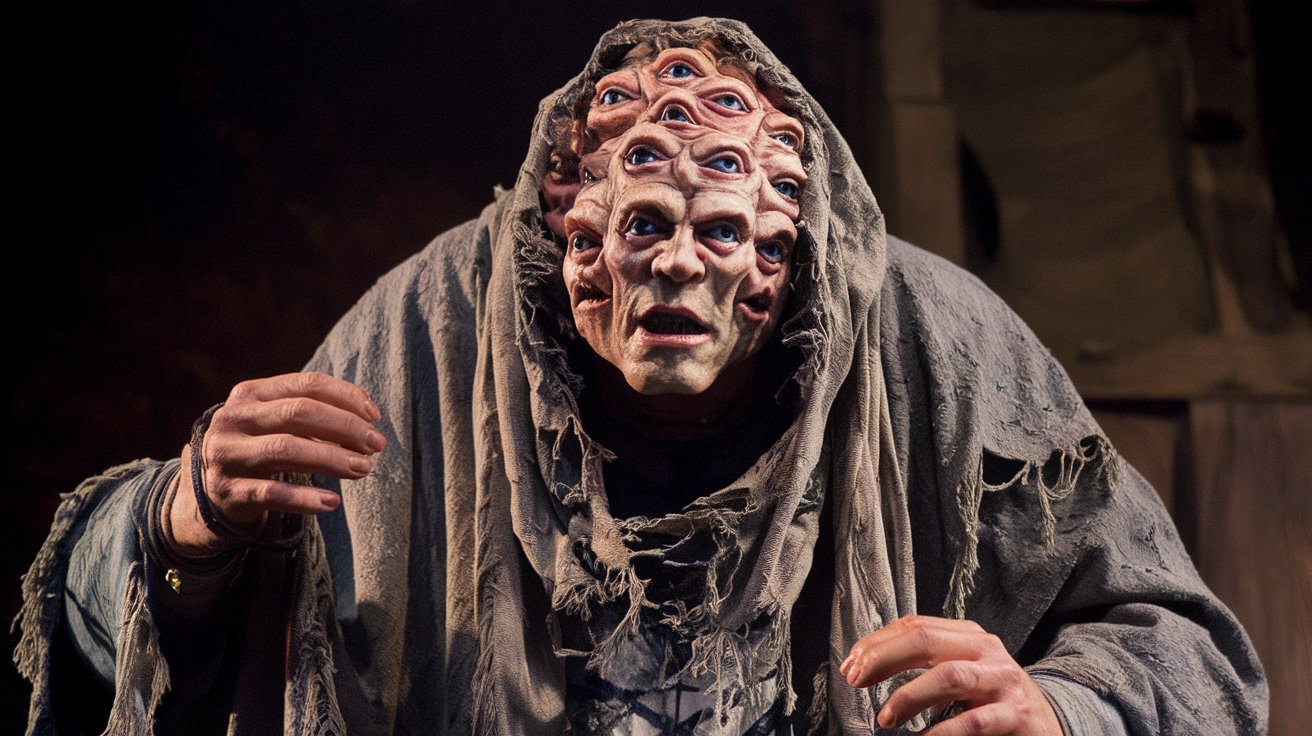
Who or what is the Monster With 21 Faces? This mysterious group terrorized Japan in the 1980s with a series of crimes that baffled authorities and captivated the public. Known for their cryptic messages and audacious acts, they targeted major companies like Glico and Morinaga, demanding ransom and spreading fear. Despite extensive investigations, the true identities of the members remain unknown. Their story is a blend of real-life crime and urban legend, making it a fascinating chapter in Japanese history. Dive into these 35 facts to uncover the chilling tale of the Monster With 21 Faces and their impact on society.
Key Takeaways:
- The Monster With 21 Faces was a mysterious criminal group in Japan that targeted food companies, leaving a lasting impact on society and inspiring numerous theories about their true identity and motives.
- Despite extensive police investigation and numerous theories, the true identity of the Monster With 21 Faces remains a captivating unsolved mystery, leaving behind a legacy that continues to intrigue people worldwide.
The Mysterious Monster With 21 Faces
The Monster With 21 Faces is one of Japan's most infamous criminal groups. Their story is filled with intrigue, mystery, and unanswered questions. Let's dive into some fascinating facts about this enigmatic group.
Origins of the Monster With 21 Faces
Understanding the beginnings of this group helps set the stage for their notorious activities.
- The group first emerged in 1984, targeting the Japanese candy company Glico.
- They kidnapped the president of Glico, Katsuhisa Ezaki, but released him unharmed after three days.
- The name "Monster With 21 Faces" comes from a character in a series of Japanese detective novels by Edogawa Rampo.
- They sent numerous letters to the media, taunting the police and the companies they targeted.
Criminal Activities and Tactics
The group's methods were both sophisticated and terrifying, leaving a lasting impact on Japan.
- They poisoned Glico products with cyanide, causing a nationwide panic.
- The group demanded a ransom of 1 billion yen and 100 kilograms of gold bars from Glico.
- They also targeted other food companies like Morinaga, Marudai Ham, and House Foods.
- Their letters often included puzzles and cryptic messages, adding to their mystique.
- Despite their threats, no one was ever harmed by their poisoned products.
The Police Investigation
The police were relentless in their pursuit, but the Monster With 21 Faces always seemed one step ahead.
- Over 125,000 officers were involved in the investigation.
- The group sent 114 letters to the police and media during their crime spree.
- They used public payphones to communicate, making it difficult to trace their calls.
- The police offered a reward of 50 million yen for information leading to their capture.
- Despite extensive efforts, the police never identified any members of the group.
The Impact on Japanese Society
The Monster With 21 Faces left a significant mark on Japan, influencing both the public and corporate sectors.
- The case led to increased security measures in the food industry.
- Many companies began using tamper-evident packaging to protect their products.
- The public's trust in food safety was severely shaken.
- The case inspired numerous books, movies, and TV shows in Japan.
- It remains one of Japan's most famous unsolved mysteries.
The Disappearance of the Monster With 21 Faces
After years of terrorizing Japan, the group suddenly vanished, leaving behind many questions.
- In 1985, the group announced they were disbanding in a final letter.
- They claimed they had made enough money and no longer needed to continue their activities.
- The letter also mocked the police for their inability to catch them.
- The group's disappearance coincided with the suicide of Superintendent Yamamoto, who was in charge of the investigation.
- Some believe the group disbanded out of respect for Yamamoto's dedication.
Theories and Speculations
Many theories have emerged over the years about the true identity and motives of the Monster With 21 Faces.
- Some believe the group was composed of disgruntled former employees of the targeted companies.
- Others think they were a highly organized criminal syndicate with connections to the yakuza.
- There are theories that the group was a front for a larger, more sinister organization.
- Some speculate that the group was made up of pranksters who never intended to cause real harm.
- Despite numerous theories, no concrete evidence has ever surfaced to identify the members.
Legacy of the Monster With 21 Faces
The story of the Monster With 21 Faces continues to captivate and intrigue people around the world.
- The case is often cited in discussions about corporate security and crisis management.
- It has become a part of Japanese pop culture, referenced in various media.
- The group's tactics have been studied by criminologists and law enforcement agencies.
- The case remains a popular topic for true crime enthusiasts.
- The Monster With 21 Faces is a reminder of the power of fear and the impact of psychological warfare.
- Their story serves as a cautionary tale about the vulnerabilities of modern society.
The Legacy of the Monster With 21 Faces
The Monster With 21 Faces case remains one of Japan's most baffling mysteries. This group terrorized companies with extortion, threats, and poisoned products, leaving authorities stumped. Despite extensive investigations, the true identities of the members were never uncovered. The case highlighted vulnerabilities in corporate security and law enforcement's limitations. It also sparked widespread fear and fascination, becoming a significant part of Japanese criminal history. The group's cryptic messages and audacious actions have inspired numerous books, documentaries, and discussions. Even today, the Monster With 21 Faces serves as a chilling reminder of how elusive and dangerous organized crime can be. The unanswered questions and unresolved nature of the case continue to captivate those interested in true crime and mystery. This legacy ensures that the story of the Monster With 21 Faces will not be forgotten anytime soon.
Frequently Asked Questions
Was this page helpful?
Our commitment to delivering trustworthy and engaging content is at the heart of what we do. Each fact on our site is contributed by real users like you, bringing a wealth of diverse insights and information. To ensure the highest standards of accuracy and reliability, our dedicated editors meticulously review each submission. This process guarantees that the facts we share are not only fascinating but also credible. Trust in our commitment to quality and authenticity as you explore and learn with us.


